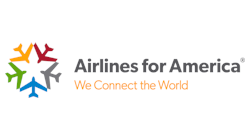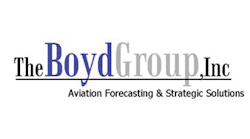A favorite writer of mine crunched a lot of data earlier this year and concluded that airfares had dropped by half over the past 30 years.
But not that anyone has much noticed. Why?
First, three decades ago not many people were flying. How come? It cost a ridiculous amount of money, that’s why.
According to figures from Airlines for America, the average roundtrip aboard a U.S. domestic flight inflation-adjusted for 2011 dollars cost $575 in 1979. By 2011, that average roundtrip ticket fell to under $350.
Since it cost so much to fly back in the day, there weren’t that many people who cared what it cost. Summer family vacations to me when I was a kid meant getting in the back of the car.
And why were prices so high? Because that’s just how the government wanted it.
Jimmy Carter doesn’t get too many accolades for the time he spent in the White House. But we can definitely thank him for saving two industries:
- The beer industry. (It’s true, trust me. All that great microbrew we enjoy today is because of him).
- The airline industry.
Before 1978, bureaucrats at the Civil Aeronautics Board told airlines not only where to fly, but how much to charge. How many know that it was illegal in 1974 for an airline to charge less than $1,400 in inflation-adjusted dollars for a flight between New York and Los Angeles?
This wasn’t so unusual back then. After all, someone called “Ma Bell” not only owned the nation’s phone lines, but her motherly embrace even reached right through the walls, too, since she owned the rotary-dial phones inside everyone’s homes.
But the COB wasn’t nimble enough to deal with the effects of the oil embargo and the energy crisis of the 1970s. And that was pretty much that. Deregulation worked and the price to fly slowly but surely become affordable for all. No more would my younger self fight with my sister on the two-day drive to Miami. No, I could fight with her aboard the three-hour flight to Miami!
Consider what deregulation did for the passenger airline business. In 1965, only 20 percent of Americans had ever flown on a plane. By 2000, half took at least one flight a year. Passenger numbers tripled between the 1970s and 2011.
Airlines, while not guaranteed a profit by the government, certainly learned quickly how to game the system. Everyone on the same flight to Omaha it would seem should pay the same fare. After all, we’re all leaving and arriving on the same plane at the same times on the same tank of gas. But we all know that the guy sitting next to you might the sucker who spent hundreds more than you or could be the spendthrift who would look upon you with great pity.
So how much “should” it cost to Omaha? It’s anybody’s guess. The mega-merger between US Airways and American means one less competitor. But it’s already been a race to the bottom for years now. Since 9/11, 47 airlines declared bankruptcy.
Evidently, those “cheap” airfares no one appreciates might be a thing of the past, anyway. Over the past few years, the airlines have tacked on another $6 billion in fees annually for everything from checked-bags to a seat in the emergency row.
According to aviation consultant, Boyd Group International, the average true price of a one-way airline ticket – what’s ultimately on your Amex – has increased by nearly 30 percent since 2008. Federal fees and taxes push that price up 12.5 percent, but the full cost includes fees for what used to free.





